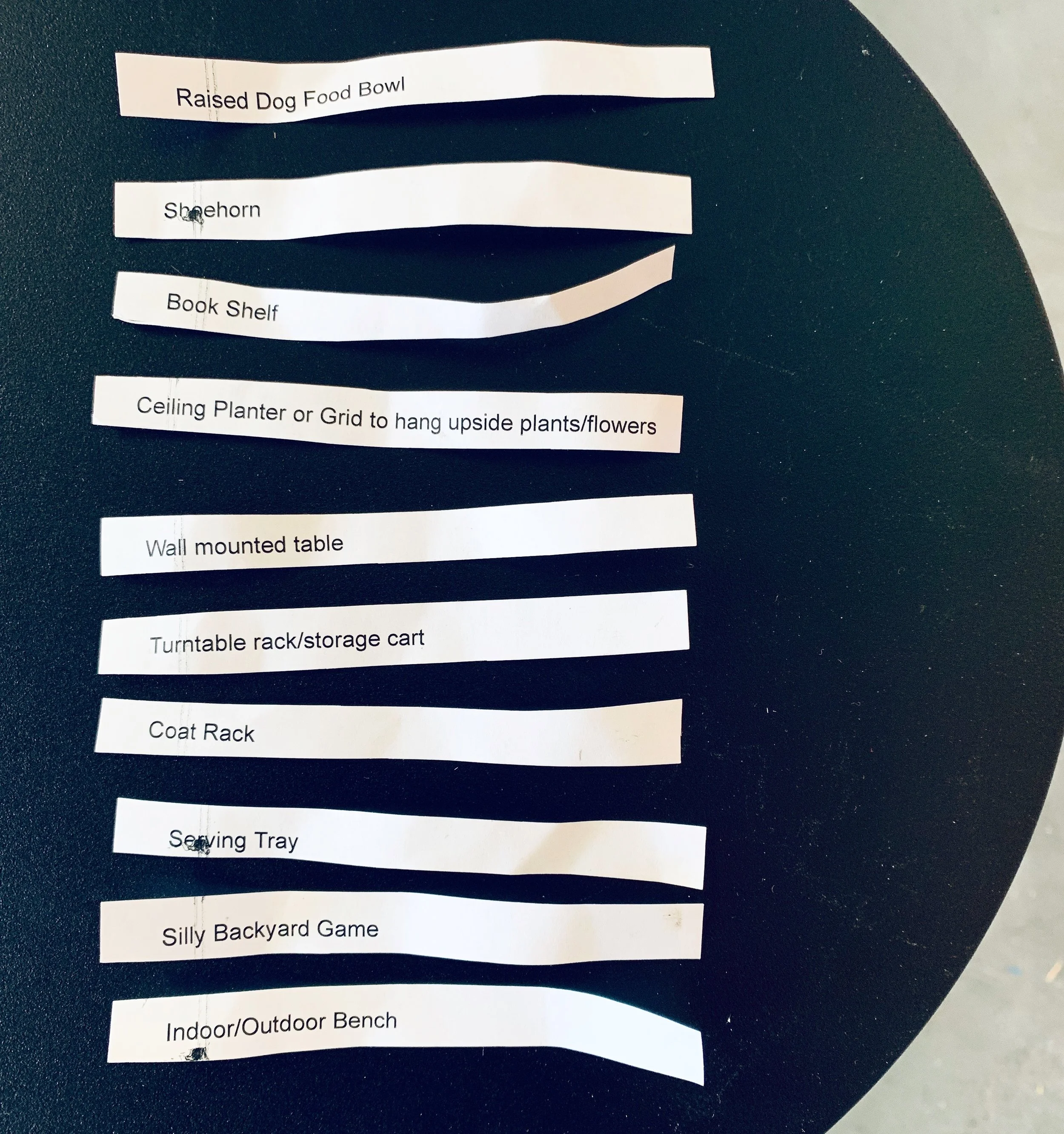10 New Things - Part 3 - Wall Mounted Table - That's it.
“Wall Mounted Table” - that’s it. That’s all the paper said.
Early into my ideating for this piece I found myself getting stuck in the world of novelty. I was trying to figure out how to make a wall mounted dining table for two, with a nifty hinge system and counterweight.
Stop. Pause.
Who said it needed to be dining table size?
Who said it needed to fold up ?
Who said it needed to fold up in cool way?
I realized that from the start I had already thrown a lot of extra adjectives onto the clue. But all that was written was “wall mounted table”. That’s it.
This happens with me fairly often. It’s not necessarily “overthinking” the problem - it’s that I added a bunch of extra stuff to the problem.
Wall mounted table. That’s it.
Let’s start over.
Questions that helped me reach a solution:
What is a table? A table is a surface that resides at a certain height.
What size is a table? A table can be any size.
What height is a table? A table can be just about any height.
Does use inform size and height? Typically.
Do I need to decide what it will be used for to start making? That would be helpful.
Am I using only materials found in my studio right now? Yes
Cool. Start with the material. Material will inform size, which will inform use, which will come back around to inform final dimensions. Now go make.
I’ve noticed that I achieve the best results when I can strip everything away and just start making. That is where things feel like fun - it feels like play. It feels like art making - which, I mean, I feel like I’m making something that I have overdetermined or predetermined before I even started.
I have a clean starting line.
That’s a great place to start.
I picked up a few sheet metal discs that I had lying around and started figuring out different ways to combine, intersecting planes, etc…
The sizes of the discs very quickly informed the size of the table. I didn’t want to go much bigger, I feared complication with wall mounting.
So I decided it was a small table - like a night stand, or micro side table. You might even call it shelf. But isn’t a shelf just a table used for some things and not others?
Wall mounted (side) table.
Done.








